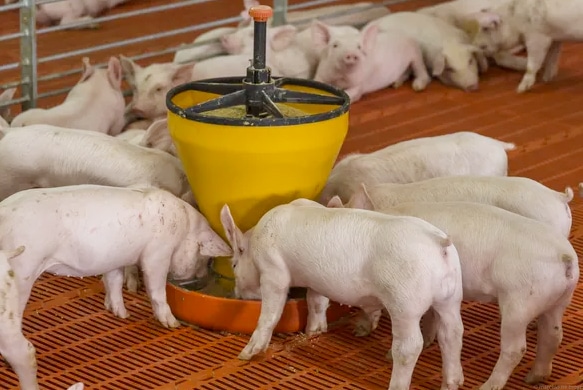Source: Glenneis Kriel, Farmer’s Weekly, 18 September 2021, photo credit: The Pig Site
Feed accounts for 65% to 75% of a poultry or pig farmer’s total input costs. Feed expert Dr Leon Ekermans spoke to Glenneis Kriel about strategies to reduce these costs and prevent wastage.
To get the most out of your feed, start with the most efficient animals for your production environment. So says Dr Leon Ekermans, director at Bester Feed and Grain.
Ekermans adds that the feed efficiency of genetically improved animals is significantly higher than that of indigenous breeds.
Since the early 1960s, the feed conversion ratio of broilers and porkers, for example, has more than halved, with modern broilers requiring about 1,6kg of feed for every kilogram of weight gained and porkers needing approximately 1,9kg to gain a kilogram.
Having an animal that is genetically feed- efficient is not enough, however, as feed efficiency is also influenced by factors such as stress, environmental conditions, feed quality and ingredients, as well as the way in which the feed is provided.
The animals should therefore be weighed regularly to determine if they are meeting targeted growth norms, as predefined by suppliers, and this growth should be counterbalanced by the volumes of feed given.
“Most farmers are good at measuring growth rates, but few keep track of the volume of feed given, unless they have large operations where feed intake is measured automatically. If you don’t know how much feed you’re giving, you won’t be able to determine your efficiency or identify irregularities,” says Ekermans.
Read more
The South African Pork Producers’ Organisation (SAPPO) coordinates industry interventions and collaboratively manages risks in the value chain to enable the sustainability and profitability of pork producers in South Africa.







